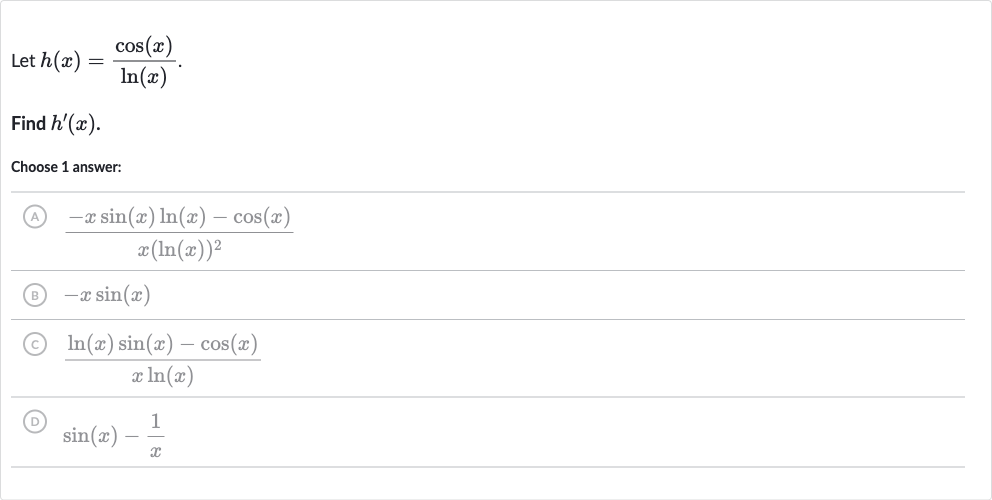AI tutor
Full solution
Q. Let .Find .Choose answer:(A) (B) (C) (D)
- Identify Functions: To find the derivative of the function , we will use the quotient rule, which states that the derivative of a function that is the quotient of two other functions, , is given by .
- Find Derivatives: First, we identify the functions and where and . We will need to find the derivatives and .
- Apply Quotient Rule: The derivative of with respect to is .
- Simplify Expression: The derivative of with respect to is .
- Combine Terms: Now we apply the quotient rule: . Substituting the derivatives we found, we get .
- Match Answer Choices: Simplify the expression: .
- Match Answer Choices: Simplify the expression: .We can further simplify by combining the terms in the numerator over a common denominator, which is : .
- Match Answer Choices: Simplify the expression: .We can further simplify by combining the terms in the numerator over a common denominator, which is : .Now we look at the answer choices to see which one matches our derivative:(A) matches our result.(B) does not match our result.(C) does not match our result.(D) does not match our result.

